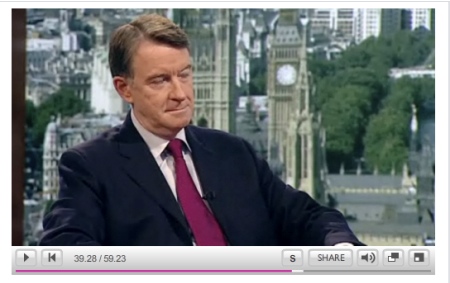For once, a really powerful Leading Article in the Irish Times.
THE REPORT of the Commission to Inquire into Child Abuse is the map of an Irish hell. It defines the contours of a dark hinterland of the State, a parallel country whose existence we have long known but never fully acknowledged. It is a land of pain and shame, of savage cruelty and callous indifference. The instinct to turn away from it, repelled by its profoundly unsettling ugliness, is almost irresistible. We owe it, though, to those who have suffered there to acknowledge from now on that it is an inescapable part of Irish reality. We have to deal with the now-established fact that, alongside the warmth and intimacy, the kindness and generosity of Irish life, there was, for most of the history of the State, a deliberately maintained structure of vile and vicious abuse.
Mr Justice Ryan’s report does not suggest that this abuse was as bad as most of us suspected. It shows that it was worse. It may indeed have been even worse than the report actually finds – there are indications that “the level of sexual abuse in boys’ institutions was much higher than was revealed by the records or could be discovered by this investigation”.
With a calm but relentless accumulation of facts, the report blows away all the denials and obfuscations, all the moral equivocations and evasions that we have heard from some of the religious orders and their apologists. The sheer scale and longevity of the torment inflicted on defenceless children – over 800 known abusers in over 200 institutions during a period of 35 years – should alone make it clear that it was not accidental or opportunistic but systematic.
I’ve been reading the report. In one way, it takes one’s breath away — especially when one realises the extensiveness and scale of the brutality. But in another way, to anyone who grew up in 1950s Ireland, it’s eerily unsurprising. And, in a way, the worst thing of all is the tacit connivance of the Irish state in allowing it all to happen while its authorities were perfectly aware of what was going on.
And there’s more. As the Irish Times puts it:
The key to understanding these attitudes is surely to realise that abuse was not a failure of the system. It was the system. Terror was both the point of these institutions and their standard operating procedure. Their function in Irish society was to impose social control, particularly on the poor, by acting as a threat. Without the horror of an institution like Letterfrack, it could not fulfil that function. Within the institutions, terror was systematic and deliberate. It was a methodology handed down through “successive generations of Brothers, priests and nuns”.
There is a nightmarish quality to this systemic malice, reminiscent of authoritarian regimes. We read of children “flogged, kicked . . . scalded, burned and held under water”. We read of deliberate psychological torment inflicted through humiliation, expressions of contempt and the practice of incorrectly telling children that their parents were dead. We read of returned absconders having their heads shaved and of “ritualised” floggings in one institution.
We have to call this kind of abuse by its proper name – torture. We must also call the organised exploitation of unpaid child labour – young girls placed in charge of babies “on a 24-hour basis” or working under conditions of “great suffering” in the rosary bead industry; young boys doing work that gave them no training but made money for the religious orders – by its proper name: slavery.
This was the reality of ‘Holy Catholic Ireland’ in the formative decades of the state — and in the years when I was growing up. It’s like reading about an informal Celtic Talibanate. I don’t normally think much about religion, but reading the Commission’s report has reminded me of why I ceased to be a Catholic, and why I’ve loathed the institutional church ever since.

